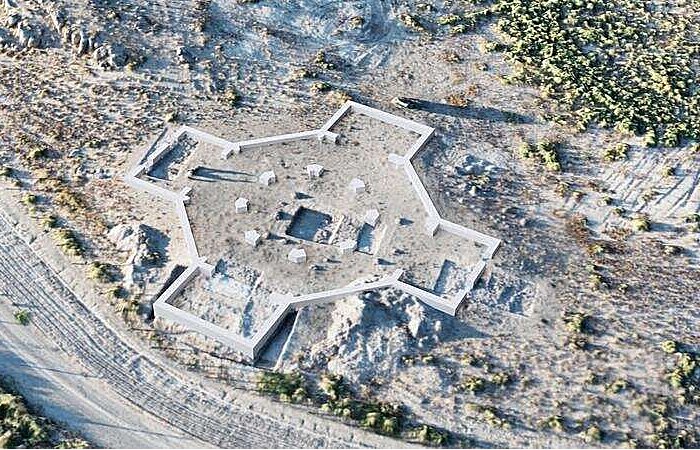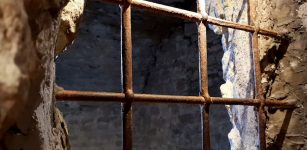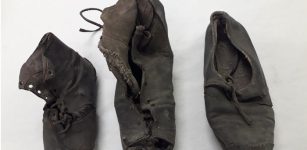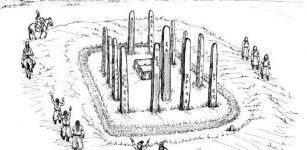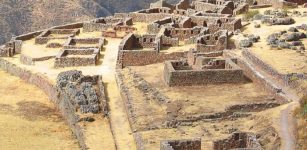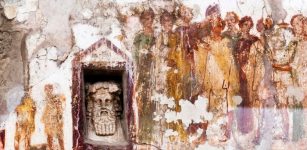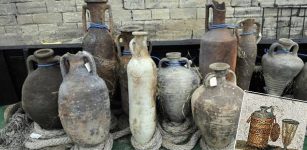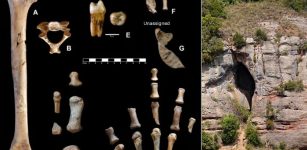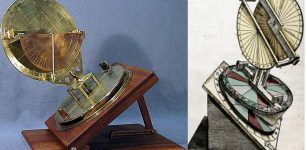Previously Unknown Early Christian Church Unearthed In Ancient City Of Artaxata
Conny Waters - AncientPages.com - Archaeologists from the National Academy of Sciences of Armenia and the University of Münster have made a groundbreaking discovery of a previously unknown early Christian church in the ancient city of Artaxata.
Armenian-German archaeologists working at the excavation site. Image credit: The Armenian-German Artaxata Project.
The discovery of an octagonal building with cruciform extensions is a significant breakthrough. The team meticulously excavated sections of the church and employed advanced geophysical methods to study it.
Professor Achim Lichtenberger of the University of Münster noted that the 4th-century building is the oldest archaeologically documented church in the country. This discovery provides significant evidence of early Christianity in Armenia, highlighting its historical and cultural importance.
Dr. Mkrtich H. Zardaryan of the National Academy of Sciences of Armenia said that octagonal churches are a new architectural feature in this area, although they have been well-documented in the Eastern Mediterranean region, where they originated in the 4th century AD.
Typologically, the discovery aligns with early Christian memorial structures. Within the cross-shaped extensions, researchers identified remnants of wooden platforms that have been radiocarbon dated to the mid-4th century AD.
Khor Virap Monastery, at the foot of Mount Ararat, is very close to the newly discovered church. Credit: University of Münster
The octagonal building, measuring approximately 30 meters in diameter, featured a basic mortar floor and terracotta tiles. Additionally, marble artifacts suggest that it was ornately adorned with this material imported from the Mediterranean region.
The German-Armenian team has been conducting their research in Armenia since September. They intend to persist with their excavations, aspiring to uncover new findings, particularly regarding the dedication of the church.
According to historical accounts, Gregory the Illuminator played a pivotal role in converting the Armenian king Tiridates III to Christianity in Artaxata in 301 AD. This event marked Armenia as the first Christian state globally. The medieval monastery of Khor Virap, located near the recently discovered church, serves as a significant reminder of this rich tradition and its enduring legacy.
Artaxata, Khor Virap and the Ararat. Image credit: The "Armenian-German Artaxata Project" (AGAP)
Artaxata was the capital of the Kingdom of Armenia, governed by both the Artaxiad and Arsacid dynasties.
During the Hellenistic period, it evolved into a significant metropolis. Serving as the capital for nearly six centuries, Artaxata played a crucial role in Armenian history and development. Since 2018, the Armenian-German research team has been conducting an investigation into the Hellenistic metropolis of Artaxata located in the Ararat Plain.
Artaxata was the capital of the Armenian kingdom of the Artaxiden dynasty, and a remarkable myth is entwined around its foundation.
The Carthaginian Hannibal is believed to be the Artaxid King Artaxias I. (189-160 BC) advised to settle his capital at this point.
A preliminary reconstruction shows the late antique church of Artaxata. Credit: University of Münster
Probably this founding story was intended to reflect a Carthaginated antagonism to Rome. The city developed into an important metropolis in Hellenistic times and was the capital of the Kingdom of Armenia due to its imperial expansion, except for brief interruptions in which Tigranes II (95-55 BC) moved the capital to Tigranakert.
During the 1970s and 1980s, archaeological excavations concentrated on hills I and VIII. These efforts, led by theArmenian Academy of Sciences, aimed to achieve both topographical and chronological documentation of the urban area.
Researchers primarily uncovered fortified structures. on hill I. On hill VIII, there were discovered residential quarters featuring corridor houses that follow a consistent architectural blueprint. The entire walled city area exhibited dense development.
The city was encircled by 3.8 kilometers of defensive walls, encompassing hills I through IX. This fortification safeguarded an urban area spanning approximately 30 to 35 hectares. Based on the central location, integration into the fortification time, the difficult access and the found painted building and stucco ornamentation is believed to be on hill II of the royal palace.
The Armenian-German excavation project AGAP is crucial for deepening our understanding of settlement development at the Hellenistic royal residence of Artaxata.
As for the remains of Artaxata's early Christian church, the archeologists will continue their excavations. They will aim to uncover new discoveries, particularly solving the intriguing mystery of whom the church was dedicated to.
Source
Written by Conny Waters - AncientPages.com Staff Writer




